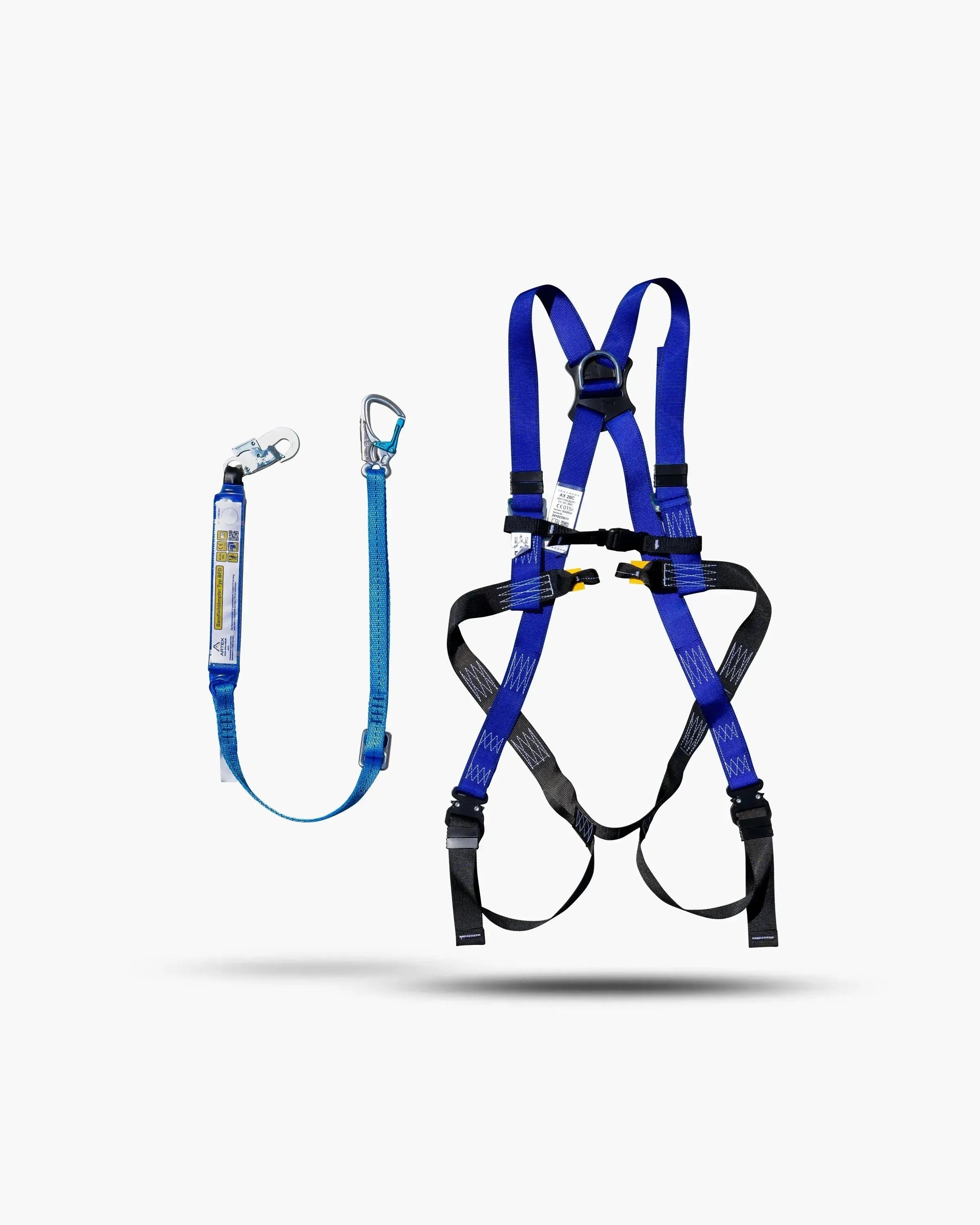After we have flexibility of different platform sizes for working at heights, another critical issue is now coming into focus: entering and exiting the work basket of a mobile elevating work platform at height.
Managing these processes regularly raises questions and requires a clear understanding of safety regulations. In this article, we will look at the legal aspects and safety protocols that must be taken into account to ensure that every movement – high above the ground – is carried out not only efficiently, but above all safely.
legal basis and safety regulations
aerial work platforms are not designed to transport people from one level to another; exiting the work basket at a height is not permitted, but is permitted in a few exceptional cases. Leaving the aerial work platform at a height must be strictly monitored and is only permitted in exceptional cases.
Even according to the manufacturer's information and operating instructions, this is not permitted and is considered improper behavior. For practical reasons, e.g. during certain assembly work, it may be necessary to leave the work basket of an aerial work platform. The prerequisite is that the user properly protects himself against falls using personal protective equipment.
Relevant standards and rules
- EN 280 "Mobile elevating work platforms"
- DGUV Information 208-019 "Safe handling of mobile aerial work platforms"
- DGUV Principle 308-008 "Training and commissioning of operators of aerial work platforms"
- DGUV Principle 308-009 “Qualification and authorization of drivers of all-terrain telescopic forklifts”
- DGUV Rule 101-005 "Liftable Personnel Lifting Equipment"
Risk management when exiting the work basket
It starts with comprehensive planning and risk analysis to identify and minimize potential hazards when exiting the platform. This includes selecting the right equipment (PPE), considering environmental conditions and ensuring that all safety measures and emergency plans are well established. Continuous training of personnel in safe working practices and the use of appropriate personal protective equipment are also essential to manage the risks associated with working at height.
Common points in risk assessment
- injuries during the catching process
- Trapped between work basket/work platform and structure
- fall tripping
- Fall due to sudden movements of the device (e.g. by unloading the telescopic boom when getting out)
- Falling of material and tools
Best Practices: Entering and Exiting the Work Basket at Height
The following best practices are essential for safe handling when entering and exiting the work basket of an aerial work platform:
- When leaving the raised work platform, a special risk assessment must be carried out, taking into account the possible risk of falling and being crushed.
- The written instruction of employees must include the special aspects of leaving the aerial work platform. The person receiving the instruction must confirm receipt of the written instruction by signing it.
- Leaving the raised work platform and climbing onto a fixed component is regulated in the operating instructions and may only be done via exits provided for this purpose.
- The basic requirements for the safe operation of aerial work platforms are a prerequisite for ensuring that safe climbing is possible.
The work platforms used must meet the following criteria
- The aerial work platforms used have sufficient load-bearing capacity, rigidity and stability.
- Only work platforms are used that have the exit on the side facing the climbing object. The use of additional climbing or climbing aids that are not part of the lifting platform, such as ladders, is not permitted.
- When leaving the work platform using the exit described by the manufacturer, it is not necessary to climb over the railing.
- If possible, equipment with a pivoting work basket should be used, as these can be aligned to the exit side for easier access.
Additionally
- There is a risk of falling when leaving the work platform. Therefore, before leaving the work platform, employees must secure themselves using personal protective equipment against falls (PPE) to suitable structural anchor points outside the work platform specified by the employer. These anchor points must be safely accessible from the work platform. Note: Suitable anchor points [outside the work platform] must be dimensioned for a person so that they can withstand a static force of 10 KN [7.5 kN] and hold the person safely. Suitable anchor points can be, for example, concrete or wooden beams, girders or pipes of steel structures.
- In addition to the person leaving the work basket, a second operator is on site and, secured with personal protective equipment, monitors the person exiting.
- Communication between the person crossing and the second operator on site is ensured.
- The working height/reach is utilized to a maximum of 75%.
- The device must not be moved or used for any other purpose during entry and exit.
- Unintentional activation of the control must be excluded (e.g. emergency stop)!
In view of the possible risk of crushing and damage to property, sufficient distances must be maintained from solid objects in the surrounding area, also taking into account the effects (rocking, whip effect) when leaving the work platform.
In addition, a rescue concept must be in place.
















Share:
This is what the specifications of work platforms mean
Whip or catapult effect: Simply explained